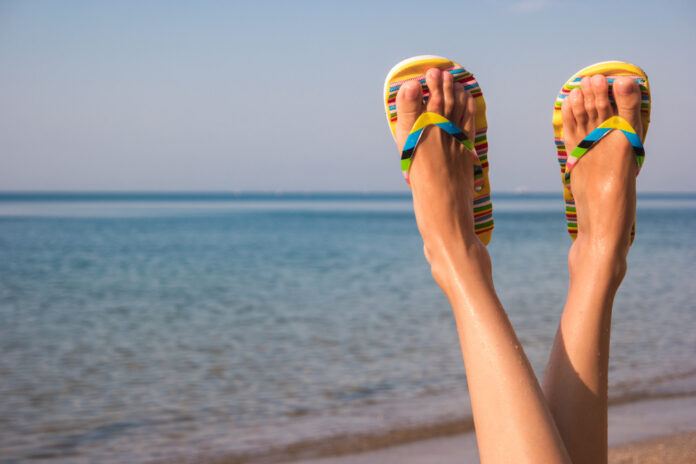
When flip-flops become everyone’s go-to choice of footwear, it is a sure sign that summer has arrived. For comfort and convenience, you cling to your favorite open-toed shoes, yet experts shudder at the thought of daily wear. Flip-flops shouldn’t be your main pair of shoes, even though they might not be a bad choice for the occasional trip to the beach or spa.
Typical Flip-Flops Do Not Provide Enough Support For Everyday Wear
Flip-flops don’t provide your foot with any arch support. Flip-flops have a thin rubber or another material sole, which makes your foot as flat as possible, which is not optimal for most individuals. You may experience foot pain, excessive pressure, and soreness in the arch and heel.
Additionally, there is no heel padding and little support for your feet in the footwear. Instead, the shoe’s sole is made of a thin rubber material. Flip-flops don’t provide shock absorption because your heel frequently has less than one inch of protection from the ground. Your feet experience tremendous force as you walk.
Dangers of Wearing Flip-Flops for an Extended Period
You risk developing tendinitis, sprained ankles, and foot pain if you wear a flip-flop that lacks arch, ankle, or heel support. Long-term use of flip-flops increases the risk of foot pain, discomfort, and other physical aches and pains.
Blisters, foot fungus, balance problems, strained or overextended tendons, shooting pains, plantar fasciitis, foot swelling, and other problems are just a few of the negative impacts of wearing flip-flops.
Flip-flops might cause additional, more transient exterior aches when worn in inappropriate settings. Stepping on gravel, pebbles, or even sharper things might pierce the rubber sole. The material can be pierced by something, causing excruciating discomfort or severe wounds from the penetration. It can hurt almost as much to tread on uneven items while wearing a thin piece of protection underneath your foot.
If you overestimate your pace when walking downstairs, you risk cutting your heels on the concrete. Flip-flop wearers are more likely to sustain glass cuts, fractured or stubbed toes, and damaged nail beds. Even your feet are at risk of having their toes crushed by large things. Flip-flops are infamous for making your current issues worse.
Some persons who have latex allergies may be allergic to the materials used in flip-flops. Some are made of plastic that contains BPA, a chemical related to various malignancies. If your flip-flops are made of porous materials, they may even hold onto water and host-microbial spores and viruses.
How Can You Avoid Negative Effects and Still Enjoy Flip-Flops?
Your greatest option is to avoid these discomforts through moderation. Flip-flops should only be worn when absolutely essential. For instance, it is frequently practical to wear shoe thongs to the beach, pool, spa, or public restroom. They are not recommended for prolonged walking or hiking activities, though. Aim to only wear them for brief periods of movement, such as running errands, and avoid walking long distances.
https://www.healthline.com/health/are-flip-flops-bad-for-your-feet#potential-issues



















